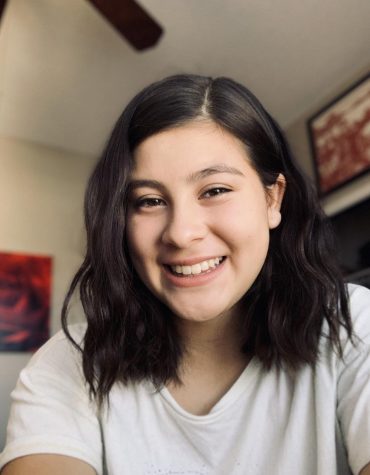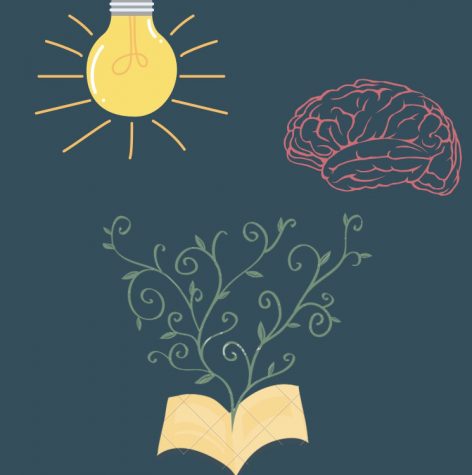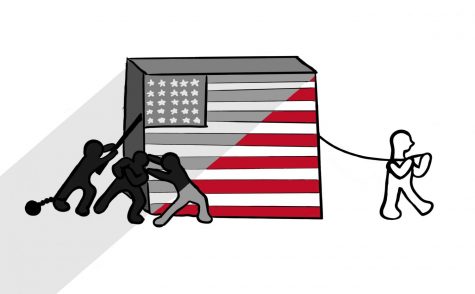In-school-sivity
DM, districts must work harder to promote diversity in curriculum
November 5, 2020
OPINION
“History,” said former British Prime Minister Winston Churchill, “is written by the victors.”
Our school systems began as religious institutions to teach the next generation of clergymen. However, the first universities were first established in 1636, only 17 years after the first slaves reached America.
We as Americans have forgotten about the children negatively impacted by this history.
Even now, there are children being excluded by their own school system. School curriculums do not always require schools to teach minority history or cultures in schools.
At least, until the Black Lives Matter protests.
A surge in these protests in July provided insight to the emotions of these minority groups and how the educational curriculum only benefits those who were in power when the outdated curriculum was created. We are now more aware of how the manner in which we teach these historical subjects affects children.
“It kind of sucks that I have to learn about the successes of minority groups on my own” says DM senior Kai-ra de la Fuente, who said history classes do not always teach the achievements of those who were not in power, including females and racial minority groups.
“The so-called victories of white men we are taught over and over might hold some relevance since they were in power,” de la Fuente said, “but their success were often built on the labor of others.”
Many stories have been circulating in social media recently of names lost to history, such as Sybil Ludington who, at the age of 16, rode double the distance of Paul Revere’s journey to warn colonists of the British approach.
But everyone only remembers Paul Revere.
Leaving out important aspects of history can negatively impact the learning environment of DM students.
“Being taught only about the achievements of white men is damaging, outdated, and offensive to all of the minorities that have changed the world,” says Carly Jazwin, a junior at Desert Mountain.
De la Fuente added that it is “discouraging to constantly learn about successful people that are nothing like you.”
‘We must understand our history’
Scottsdale educational leaders acknowledge the importance of recognizing inclusivity in education.
“Inclusivity impacts our schools and our communities,” said Julie Cieniawski, former president of the Scottsdale Education Association and current candidate for Scottsdale Unified School District governing board. “I think it is very important that issues of inclusivity first be honestly determined and addressed at every campus.
“We must understand our history in order to chart out and create our future.”
This inclusivity starts on campus, students said.
“Desert Mountain’s reading lists should include more BIPOC authors as well as articles/books about anti-racism and racial justice,” said DM junior Carly Jazwin.
Keerthi Reddy, a DM junior, says she wishes “our school was more inclusive about other cultures and celebrated other cultures as they celebrated Thanksgiving, Christmas and other American holidays…I wish [Desert Mountain] would acknowledge that other cultures have important holidays which mean a lot to them.”
Most students agree that we are not very diverse in our student population, however, we still need to learn inclusivity where it concerns these minority groups. Simple acknowledgement of someone’s culture can go a long way in helping them feel more welcome at Desert Mountain.
Desert Mountain Senior Kai-ra de la Fuente proposes “since we have a whole class on a world war, we could have a class on minority histories. Even including more of what minorities did to contribute to the history of America would be a step in the right direction.”
District working toward change, officials say
President Trump announced in September his plans to enact the “1776 Commisson,” an executive order designed to alter school curriculums to teach students more “patriotic education.” This executive order will also strike down the New York Times’ 1619 project as well as bar students from learning Critical Race Theory as it relates to systemic racism, which the President referred to as a “twisted web of lies.”
Granted, our nation’s history is not all about freedom and equality. Yes, America was built on those ideals, we are still affected by slavery and racism today. We cannot erase this from our history.
However, by not contextualizing that history within other cultural perspectives, Trump’s plan will not only will set back U.S. education in terms of inclusivity within schools, but will also teach the younger generation inaccurate portrayals of slavery–undoing any progress made during a summer of protests.
We have wonderful administrators and district leaders who are working towards change, such as Desert Mountain High School’s principal, Dr. Lisa Hirsch.
“Our SUSD district did a number of things over this summer to take in the BLM movement and work to do the right thing in our own school community,” Dr. Hirsch explained. One of those actions the school district took was to create a committee with both students and teachers “designed to work first on hearing from our students and what we need to do to address racism.”
“One thing we started to do at DMHS a couple of years ago was to conduct a survey and begin to pinpoint how welcoming Desert Mountain High School is to our students, teachers and families.” Dr. Hirsch said.
This survey has helped Desert Mountain learn of the issues that exist and is working to address them. Some issues were “related to bias and remarks and derogatory comments.”
Curriculum, book, and literature adoption committees have been formed to help implement novels to promote cultural awareness within Desert Mountain, said Dr. Hirsch, who was invited to be an administrator on the committee to review literature that high school teachers would like to use.
Beyond Just the Curriculum
Mr. Wimmer, one of the history teachers at DM, says that it is “hard to teach extra things outside of the curriculum” and that changes need to occur not only within the curriculum but also within the College Board’s guidelines for information required to be covered for the AP exams.
As of 2018, “we have new state standards for information to be covered” but also, it is “up to the individual teachers” to implement inclusivity in the classroom as well as teach about different cultures.
There is definitely more to be done, and Mr. Wimmer suggests talking about different cultures and having discussions on current events, such as the upcoming election, the Black Lives Matter Movement, the senate hearings for a new Supreme Court Justice, and any other issues that are plaguing our nation currently. “Ignorance is a tough thing to overcome,” Wimmer said, curriculum changes and different in-depth discussions about Civil Rights, Native American culture, and how history leads to our present. Change needs to happen not only within our school, but also on a national level with the CollegeBoard and AP and IB tests.
‘There is still more to be done’
Moving forward, “it’s vital to support best teaching strategies that promote critical thinking, analysis and synthesis of thought, data, and sources, to provide multiple perspectives and varied point of view, encourage in-depth conversations, and include the use of current events as relevant sources of information and as instructional strategies” Cieniawski said.
“This challenging work needs to be ongoing,” she said and “can include surveys and sensitive conversations with students, school faculty, parents, and community members both separately and collaboratively.”
But diversifying the curriculum is only a beginning.
“Beyond just diversifying the curriculum to include more than just the white man’s perspective, we also need to actively strive towards building anti-racist classrooms where all students and cultures are seen and heard” Jazwin said.
“The majority of the world is more diverse than believe” and “You have to teach diversity, that’s what America is all about. We are very diverse, when we don’t understand other cultures, we are cutting ourselves off from different groups of people” Wimmer said.
We need to continue with this positive change, despite the obstacles being put in place that do not make it easy.
We need more student suggestions.
We need to create greater change as there is still more to be done.











